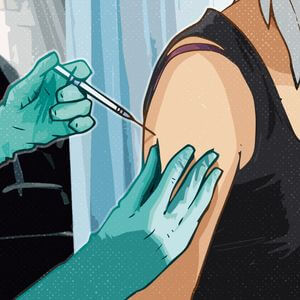HPV is the most common urogenital viral infection and most sexually active people become infected at least once in their lifetime. Cervical cancer is strongly linked to the type of HPV virus. Thus, it is mainly types 6 and 11 that are associated with cancer.
According to the WHO, cervical cancer accounts for 7.5% of all causes of cancer death in women. Prevention is based on one hand on vaccination, but also on screening for infection by PCR4 by a cervical smear and also by the cytological5 detection of precancerous lesions (analysis of cervical cells by microscopy). The HPV virus is specific for epithelial cells. Note that these are two oncogenic6 proteins, called E6 and E7, which are particularly linked to the development of inflammatory and precancerous lesions in the cervix.


